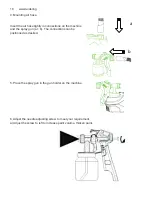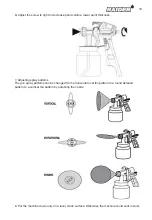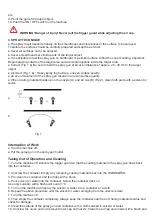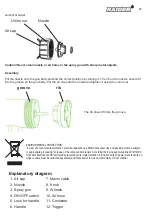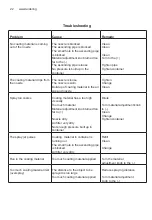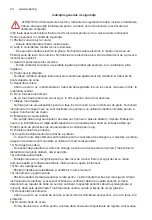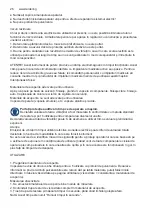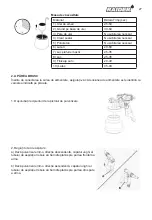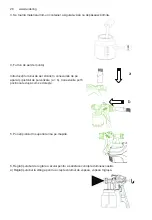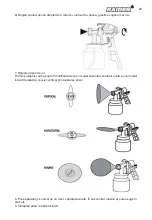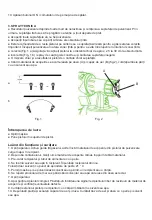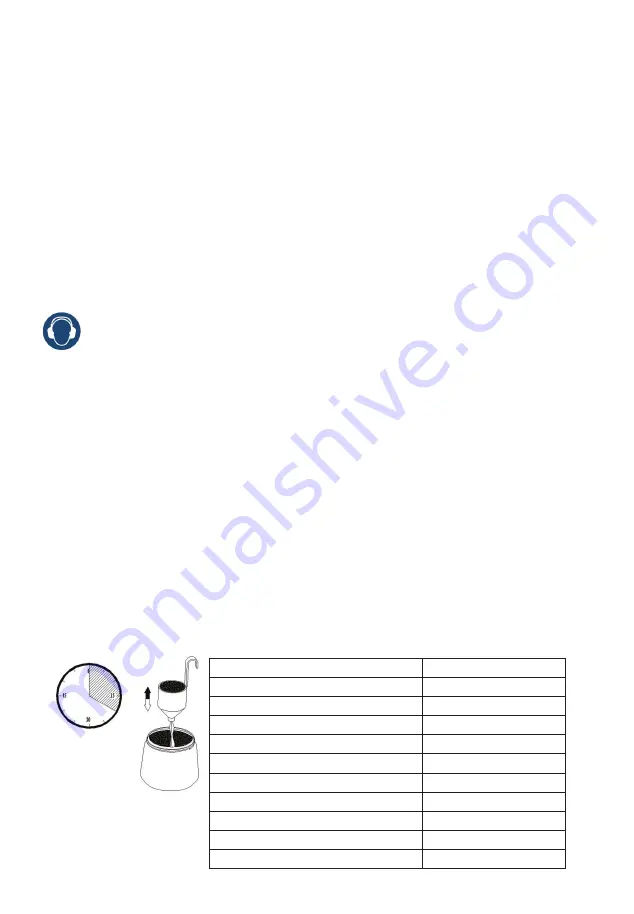
16
www.raider.bg
design:
1. Damage to lungs if an effective dust mask is not worn.
2. Damage to hearing if effective hearing protection is not worn.
3. Damages to health resulting from vibration emission if the power tool is being used over longer
period of time or not adequately managed and properly maintained.
WARNING! This power tool produces an electromagnetic field during operation. This field may
under some circumstances interfere with active or passive medical implants. To reduce the risk of
serious or fatal injury, we recommend persons with medical implants to consult their physician and
the medical implant manufacturer before operating this machine.
INTEND USE
Coating Materials Suitable for Use
Water- and solvent-based paints, finishes, primers, 2-component paints, clear finishes, automotive
finishes, staining sealers and wood sealer-preservatives.
Coating Materials Not Suitable for Use
Wall paints (emulsion paints) etc., alkali and acidic paints.
Wear hearing protection while operating the power tool
.
The declared vibration total value has been measured in accordance with a standard test
method and may be used for comparing one tool with another.
The declared vibration total value may also be used in a preliminary assessment of exposure.
WARNING
The vibration emission during actual use of the power tool can differ from the declared total value
depending on the ways in which the tool is used.
There is the need to identify safety measures to protect the operator that are based on an
estimation of exposure in the actual conditions of use (taking account of all parts of the operating
cycle such as the times when the tool is switched off and when it is running idle in addition to the
trigger time).
U
SE
1. PREPARING THE COATING MATERIAL
The paints usually need to be diluted for use with the spray gun. Since information on sprayable
dilutions is seldom given on the material tin, you can use the guidelines in the viscosity table on the
following page (viscosity = consistency of the coating material).
Measuring the Viscosity
1. Stir the coating material thoroughly before measuring.
2. Dip the viscosity test cup completely into the coating material.
3. Hold the test cup up and measure the time in seconds until the liquid empties out.
Note: This time is called
“Runout Time in Seconds”
.
Viscosity table
Material
Run out Time (Sec)
1) Oil enamel
25-60
2) Oil based primer
30-60
3) Oil stain
No thinning required
4) Clear sealer
No thinning required
5) Polyurethane
No thinning required
6) Varnish
20-60
7) Lacquer sanding sealer
25-35
8) Lacquer
25-35
9) Automotive finishes
20-40
10) Latex
45-90

















